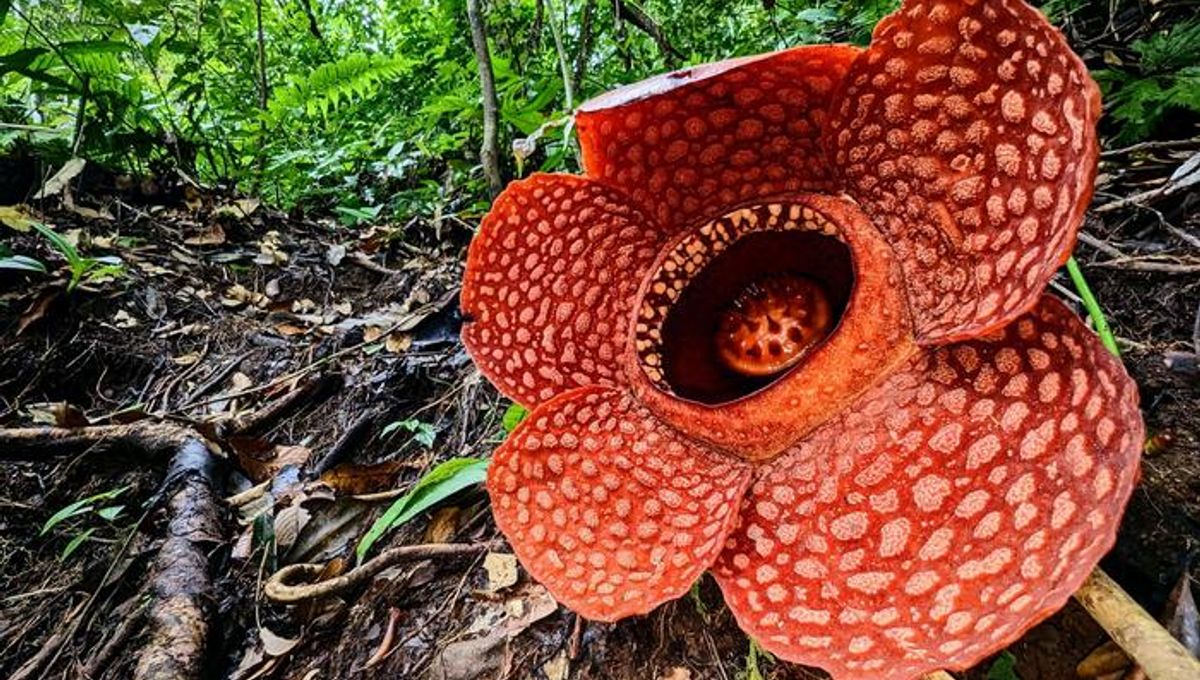
Most species in the Rafflesia genus, also known as “corpse flowers” (not to be confused with Amorphophallus titanum), are in danger. An estimated 60 percent of species are at severe risk of extinction, and 67 percent of their known habitats are outside of protected areas, a new study has found.
These parasitic plants are famous for their impressive size and stench – their flowers notoriously emit a smell similar to rotting meat that attracts insects, and the species Rafflesia Arnoldii holds the world record for the largest single flower. They also might appear in your Animal Crossing town if you are inattentive enough!
However, “Despite their global appeal, most of the 42 known species are now at risk of extinction. Urgent action is needed to protect these remarkable flowers,” the authors write in their paper.
They also call the representation of these plants on the IUCN Red List “woefully inadequate”. Only one species, Rafflesia magnifica, is listed right now. However, according to an initial assessment of these species according to IUCN criteria, 25 should be classed as Critically Endangered, 15 as Endangered, and two as Vulnerable.
“We urgently need a joined-up, cross-regional approach to save some of the world’s most remarkable flowers, most of which are now on the brink of being lost,” study author Dr Chris Thorogood, Deputy Director of the University of Oxford Botanic Garden, said in a statement – and this is exactly what the study has proposed.
One arm of the approach that the researchers suggest is a strengthened taxonomic framework. “Taxonomy in the genus has been challenging and in a state of flux. Type specimens are often poor or missing, and living material is often difficult to access,” the authors explain. These plants are invisible within their hosts for most of their life cycle, with the gigantic flowers emerging unpredictably. Their hosts are also hard to identify in the field, and how Rafflesia infect them is still unknown.
The authors also highlight that challenges with propagation and seed banking make the situation even more urgent, with the plants having “proven recalcitrant to cultivation.” However, there is hope – they spotlight Bogor Botanic Garden in West Java, Indonesia, as a “center for best practices in Rafflesia propagation.” Sharing expertise in this field to aid propagation elsewhere could help other conservation centers for the genus to be established.
More protection for Rafflesia habitats is also essential for their survival. The plants are native to Southeast Asia, a region that the researchers say has the fastest disappearing forest on the planet. For example, “Deforestation is the single greatest cause of species extinction in the Philippines, and Rafflesia is not spared,” they write. “Many of the Rafflesia species occur in severely degraded forests, while others occur in regenerating forests adjacent to human settlements.”
The importance of Indigenous peoples in this process is also showcased, with these communities being key to both finding and conserving these plants. “Indigenous peoples are some of the best guardians of our forests, and Rafflesia conservation programmes are far more likely to be successful if they engage local communities,” study author Adriane Tobias, a forester from the Philippines, explained.
Rafflesia species are used in ethnobotanical medicines: for example, as an energy drink and fertility supplement in Indonesia, for backache and as a sexual stimulant in Thailand, and to stop internal bleeding and as an aphrodisiac in Malaysia.
Ecotourism is also useful for conserving the genus, bringing both revenue to local people and awareness of the plants. Some locations where Rafflesia species grow benefit from Pokdarwis, social media tourism awareness groups where blooming events are promoted and the plants are celebrated.
“Rafflesia has the potential to be a new icon for conservation in the Asian tropics,” Tobias said.
The study is published in the journal Plants, People, Planet.
Source Link: Enormous, Stinky, And Iconic “Corpse Flowers” Need Saving From Extinction